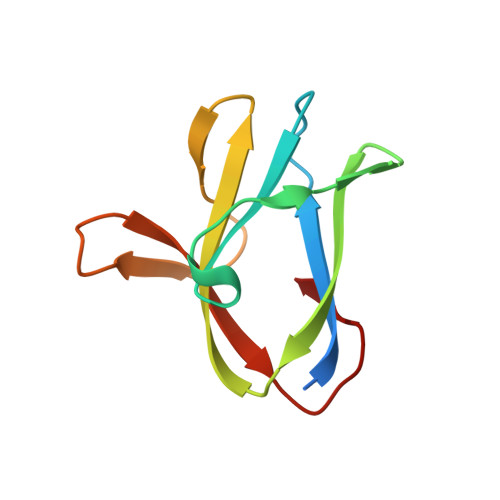Structural Basis for Glycogen Recognition by AMP-Activated Protein Kinase.
Polekhina, G., Gupta, A., van Denderen, B.J., Feil, S.C., Kemp, B.E., Stapleton, D., Parker, M.W.(2005) Structure 13: 1453-1462
- PubMed: 16216577
- DOI: https://doi.org/10.1016/j.str.2005.07.008
- Primary Citation of Related Structures:
1Z0M, 1Z0N - PubMed Abstract:
AMP-activated protein kinase (AMPK) coordinates cellular metabolism in response to energy demand as well as to a variety of stimuli. The AMPK beta subunit acts as a scaffold for the alpha catalytic and gamma regulatory subunits and targets the AMPK heterotrimer to glycogen. We have determined the structure of the AMPK beta glycogen binding domain in complex with beta-cyclodextrin. The structure reveals a carbohydrate binding pocket that consolidates all known aspects of carbohydrate binding observed in starch binding domains into one site, with extensive contact between several residues and five glucose units. beta-cyclodextrin is held in a pincer-like grasp with two tryptophan residues cradling two beta-cyclodextrin glucose units and a leucine residue piercing the beta-cyclodextrin ring. Mutation of key beta-cyclodextrin binding residues either partially or completely prevents the glycogen binding domain from binding glycogen. Modeling suggests that this binding pocket enables AMPK to interact with glycogen anywhere across the carbohydrate's helical surface.
- St. Vincent's Institute of Medical Research, 41 Victoria Parade, Fitzroy, Victoria 3065, Australia.
Organizational Affiliation:


















